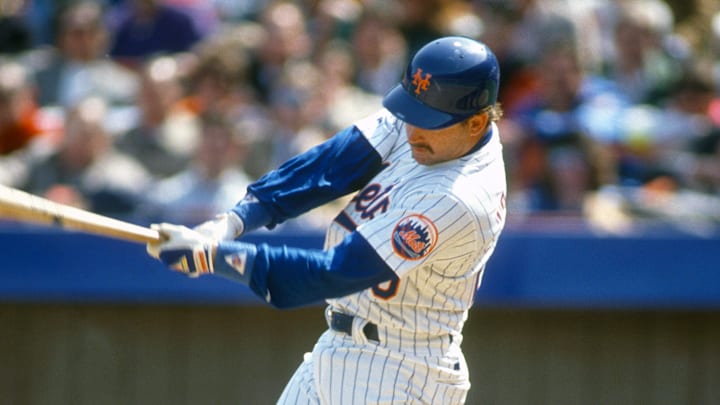The New York Mets are a storied franchise, with many great players gracing the orange and blue over the last 60 years of their existence. Despite this, the Mets have only won 2 championships during this time. The 1969 Mets were led by Manager Gil Hodges, and the team went on to win 100 games. This marked the first time the franchise achieved 100 wins during a season, and they would achieve this feat another 2 times. They reached 100 wins in the 1988 season, where they’d go on to lose to the Dodgers in the NLCS. The other time was during the 1986 season, when the team climbed to the top of the MLB mountain and won their 2nd championship.
The 1986 Mets featured a barrage of weapons throughout the 9 man lineup. Whether it was 1B Keith Hernandez with his ability to get on base, or Dwight Gooden’s electric fastball that zoomed by the hitter at up to triple digits, this team was easily the most talented Mets squad of all-time. When looking through the list of legends that played on this team, one name goes under the radar. His name is Howard Johnson, a 5 foot 11, do-it-all fielder with some pop in his bat, and he sat buried on the depth chart behind players that were deemed more talented than him. His time would come eventually, but not before dealing with some adversity early in his career.
Howard Johnson's odyssey to the Mets
Drafted #12 Overall to the Detroit Tigers in the 1979 MLB draft, high expectations were placed on the young pitcher from Clearwater, Florida. The Tigers would immediately transition the young arm into an infielder, and would stick him at 3rd base. After struggling in his first season in Single-A, Johnson turned a corner and upped his BA to .285. He would spend 2 more seasons in double and Triple-A, slugging 45 HRs and 150 RBIs during that span. This would earn him a mid-season call-up in 1982, achieving his dream of making it to the majors. The era of good feeling of Johnson wouldn’t last in Detroit, as his production was subpar at best.
With Johnson wasting away in Detroit and producing average results, he was shipped off to the New York Mets for starting pitcher Walt Terrell. At the time, the move looked like it was a mistake for the Mets due to their depth at 3rd base. Johnson wouldn’t put rest to these fears right away, as he would be platooned with Ray Knight. Knight would prove to be the better player during this time, as he hit 11 HRs with a .298 average compared to Johnson’s statline of 10 HRs and a .245 average in 1986. Davey Johnson was never a fan of Johnson’s, and even claimed he “corked his bat” to achieve his future feats of power.
HoJo’s big break in the big apple would come at the expense of 3B Ray Knight. After the 1986 Championship, Ray Knight opted to leave the Mets and signed with the Orioles. This allowed Johnson to slide into an everyday role at 3rd base, finally getting his shot to be a big league starter. Johnson would not disappoint, and would go on to hit 36 Home Runs and drive in 99 runs during the 1987 season. His display of pure power helped him finish 10th in MVP voting.
His success would not stop there, as Johnson would go on to have one of the most impressive seasons in Mets history. During the 1989 season, Johnson would go on to achieve the highest batting average of his career, hitting .287 and adding 36 Home Runs as well as reaching triple digits in his RBI total at 101. He was also able to draw 77 walks which would help give him a career-high in OBP at .369. In terms of Mets history, his 1989 season ranks #1 all-time in Mets offensive WAR. His 1989 season also ranks number one amongst Mets’ hitters in Situational Wins Added with 6.1.
Johnson isn’t a household name by any means. His contributions to the 1986 New York Mets championship team was minimal in terms of production, but his contributions to Mets history as well as the power he displayed during his career make him one of the most underappreciated Mets legends of the last 50 years.
